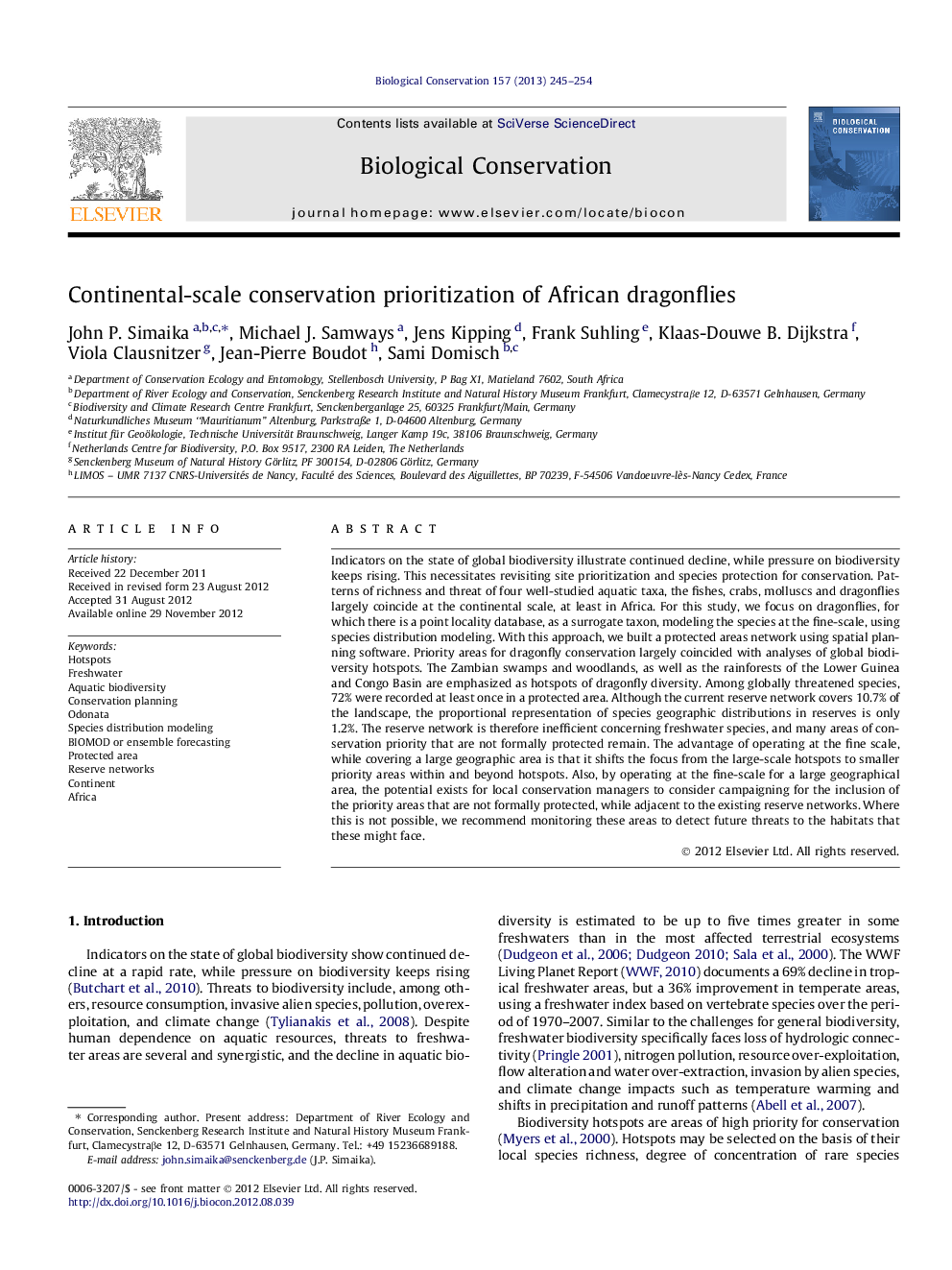| کد مقاله | کد نشریه | سال انتشار | مقاله انگلیسی | نسخه تمام متن |
|---|---|---|---|---|
| 4385207 | 1617944 | 2013 | 10 صفحه PDF | دانلود رایگان |
عنوان انگلیسی مقاله ISI
Continental-scale conservation prioritization of African dragonflies
دانلود مقاله + سفارش ترجمه
دانلود مقاله ISI انگلیسی
رایگان برای ایرانیان
کلمات کلیدی
موضوعات مرتبط
علوم زیستی و بیوفناوری
علوم کشاورزی و بیولوژیک
بوم شناسی، تکامل، رفتار و سامانه شناسی
پیش نمایش صفحه اول مقاله

چکیده انگلیسی
Indicators on the state of global biodiversity illustrate continued decline, while pressure on biodiversity keeps rising. This necessitates revisiting site prioritization and species protection for conservation. Patterns of richness and threat of four well-studied aquatic taxa, the fishes, crabs, molluscs and dragonflies largely coincide at the continental scale, at least in Africa. For this study, we focus on dragonflies, for which there is a point locality database, as a surrogate taxon, modeling the species at the fine-scale, using species distribution modeling. With this approach, we built a protected areas network using spatial planning software. Priority areas for dragonfly conservation largely coincided with analyses of global biodiversity hotspots. The Zambian swamps and woodlands, as well as the rainforests of the Lower Guinea and Congo Basin are emphasized as hotspots of dragonfly diversity. Among globally threatened species, 72% were recorded at least once in a protected area. Although the current reserve network covers 10.7% of the landscape, the proportional representation of species geographic distributions in reserves is only 1.2%. The reserve network is therefore inefficient concerning freshwater species, and many areas of conservation priority that are not formally protected remain. The advantage of operating at the fine scale, while covering a large geographic area is that it shifts the focus from the large-scale hotspots to smaller priority areas within and beyond hotspots. Also, by operating at the fine-scale for a large geographical area, the potential exists for local conservation managers to consider campaigning for the inclusion of the priority areas that are not formally protected, while adjacent to the existing reserve networks. Where this is not possible, we recommend monitoring these areas to detect future threats to the habitats that these might face.
ناشر
Database: Elsevier - ScienceDirect (ساینس دایرکت)
Journal: Biological Conservation - Volume 157, January 2013, Pages 245-254
Journal: Biological Conservation - Volume 157, January 2013, Pages 245-254
نویسندگان
John P. Simaika, Michael J. Samways, Jens Kipping, Frank Suhling, Klaas-Douwe B. Dijkstra, Viola Clausnitzer, Jean-Pierre Boudot, Sami Domisch,